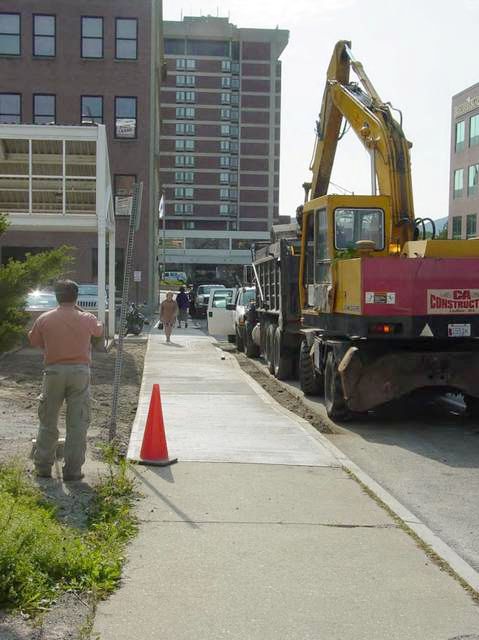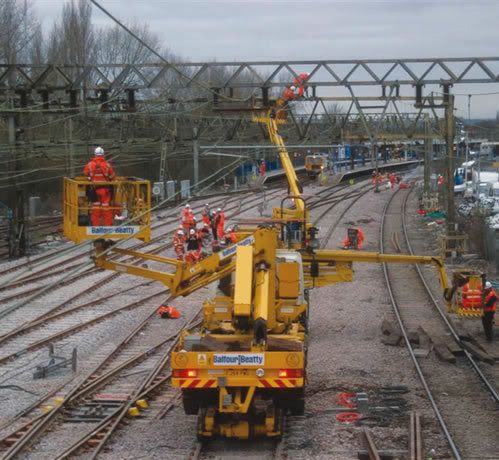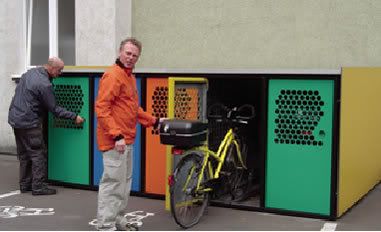(11 am. – promoted by ek hornbeck)
Adapted from an entry at Burning the Midnight Oil for Living Energy Independence … links to crossposts may be found there.
 OK, so, to make an egregiously long story merely excessively long, a very strange thing happened on the road to the Stimulus Package. As Rep. Oberstar told the U.S. Conference of Mayors:
OK, so, to make an egregiously long story merely excessively long, a very strange thing happened on the road to the Stimulus Package. As Rep. Oberstar told the U.S. Conference of Mayors:
That is why we set forth this $85-billion initiative from our committee. It’s been reduced in the final going. We expect that it’ll come out somewhere around $63 billion, but $30 billion for highways.
The reason for the reduction in overall funding … was the tax cut initiative that had to be paid for in some way by keeping the entire package in the range of $850 billion.
As I described in Transport Stimulus: You’re Doing It Wrong, actual effective stimulus spending was shortchanged — and in particular spending with substantial long term economic and strategic benefits — to “pay for” tax cuts.
In reality, if we want to be able to “afford” tax cuts, what we need first and foremost is growth, and economic growth requires effective government investment in the infrastructure of a New Energy Economy.
Energy Independent Transport has a strategic defense imperative, and a long term economic development imperative, on top of the substantial transport benefits and, in the Stimulus Bill as it stands, a substantial and primarily untapped potential for short-term stimulus.
And “not enough shovel ready projects” was reportedly the word from the last days of the Bush Transportation Department.
 Now, it is quite true that some “sexy” rail transport projects really aren’t shovel ready. It will take six years to electrify our main freight rail lines and provide 110mph Rapid Passenger Rail to most of the country. Bullet trains in California and the Northeast Corridor (NEC) will take fifteen to twenty years. These require medium to long term plans and funding.
Now, it is quite true that some “sexy” rail transport projects really aren’t shovel ready. It will take six years to electrify our main freight rail lines and provide 110mph Rapid Passenger Rail to most of the country. Bullet trains in California and the Northeast Corridor (NEC) will take fifteen to twenty years. These require medium to long term plans and funding.
But the bulk of the previous post was digging into the details, and finding out that we know for sure that there are untapped, shovel ready projects out there.
The question here is, how could this be done right?
Here’s an idea. Suppose we set up accounts for the responsible local authority for transit to be spent on any qualifying project from a list of Energy Independent Transport projects. Fund it at the level of $100 per person — roughly $30b total. And funds that have not been spent in a year get re-allocated to authorities that funded qualifying projects.
Some of those local transit authorities will be “Transit Authorities” (which do exists in quite a lot of places). Where there is no local transit authority, that will be the incorporated municipality or county. In Native American treaty reservations, it seems like it will be a First Nation council of some form.
If Congress sets its mind to it, it can work out a way to specify the local transit authority. And no bailing out and saying some localities cannot be trusted, and the money goes to the State Department of Transportation on their behalf … we have just seen that the majority of State Departments of Transportation either do not understand the importance of putting forward shovel-ready Energy Independence Transport projects … or do not really understand the needs out where the wheel hits the rail.
And if Congress sets its mind to it, it can work out a list of Energy Independence Transport projects. One thing that makes it easier is that it doesn’t have to prioritize them, or decide relative levels of funding. The local authorities will do that. Just list projects that won’t be a waste of the stimulus dollars on the obsolete transport systems of the 20th century, and we will be fine.
 Some ideas to get the list started:
Some ideas to get the list started:
- Operating subsidies to reduce public transport fares below 2008 levels to the end of 2010
- Operating subsidies to increase public transport services beyond 2008 levels to the end of 2010
- Purchase of Electric and Pluggable Hybrid Electric public transport vehicles
- Capital backlog on rail transport and transit
- Investment in Rail/Bus interchanges
- Equal Access to Bus Stops
- Building Sidewalks
- Building Pedestrian and Cycle bridges over State Routes, US Routes, and Interstates
- Bike parking and Bike Lockers at public facilities and public transport stops
- Fully paved and physically grade separated cycleways
- Electrification of rail corridors
- Electrification of trolleybus routes
… add to the list yourself.
But whatever is on the list … make the funds “use it in a year or lose it” … and you will see the bulk of the funds spent in the first year. And if you don’t … well, obviously the second year the funds will get to the transit authorities who have a demonstrated ability to find shovel-ready projects.
I expect that we would quickly learn how many “shovel ready” Energy Independence Transport projects there really are out there.
Read About It (1983)

1 comments
Author
Rep Peter DeFazio has an amendment currently with the Rules Committee to increase the funding for rail … contact your Representative in support.
To support the above proposal, contact your Senators … they have much more freedom to add something new to the current draft of the House proposal.